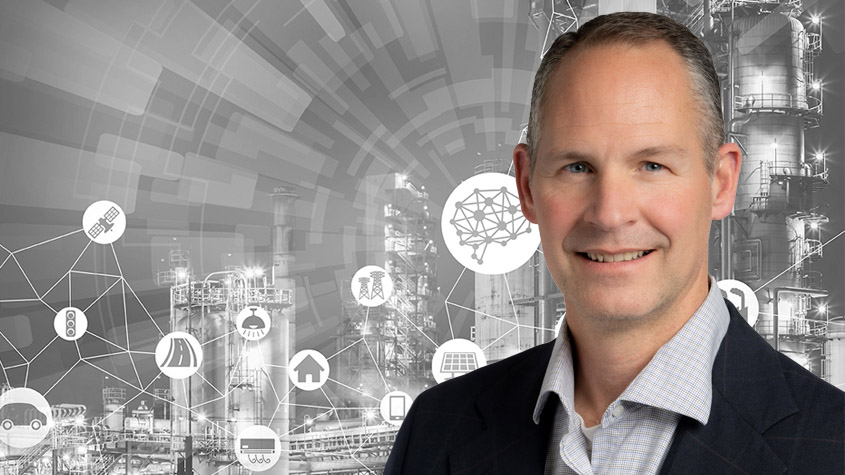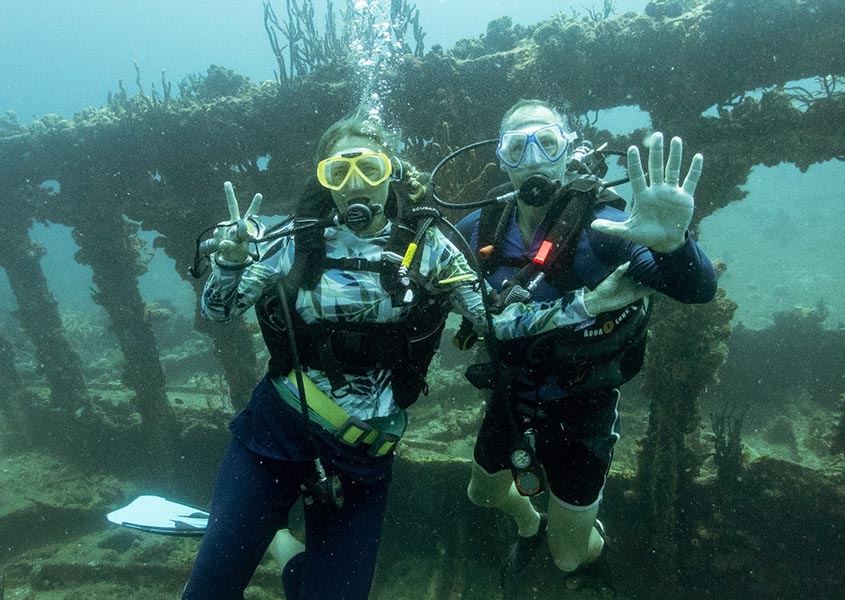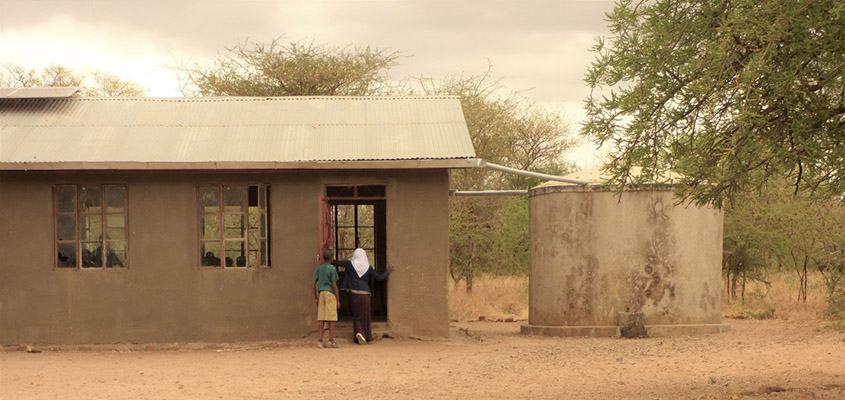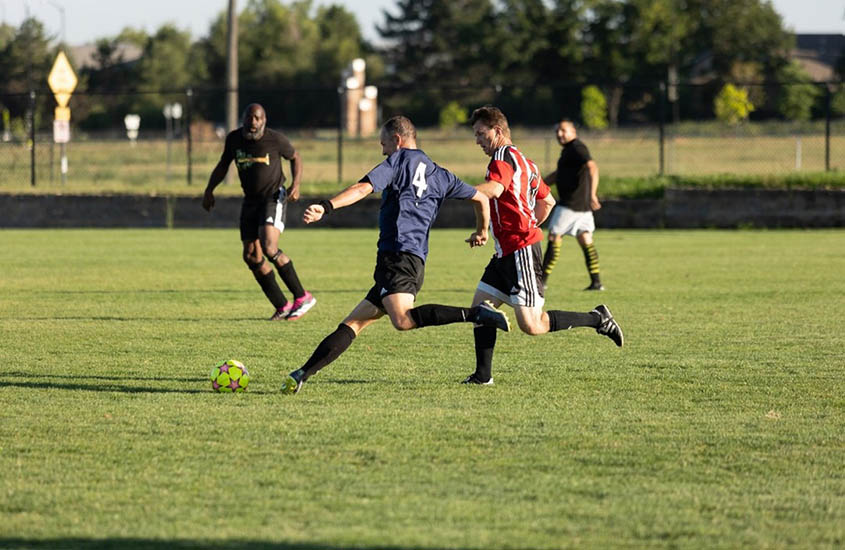Q&A With Scott Struck: From Frogs to Jerry Cans to Urban Drool
Manufacturing Masterminds

Scott Struck was waist deep in the Missouri River when he saw the frog. The amphibian lay half in and half out of the water and was exactly what Struck was hunting for. As a military brat (as Struck calls himself), he spent his childhood leapfrogging across the country. But even if his home changed from Kansas to Georgia to Minnesota, and finally to Washington, one thing stayed the same.
“A common theme of any place I lived was nature,” Struck said. “Often water.”
The young Struck could often be found scrambling through forests or wading into lakes and rivers in search of lizards, turtles, snakes, and frogs. So, when he spotted that half-submerged frog in the Missouri River floodplains, he did not hesitate. He plodded through the mud and water and snatched the frog up.
But the frog was not alone.
“It was half consumed by a snake,” Struck said. “The snake was dangling there.” He immediately dropped the frog—knowing the snake could be poisonous—but he did not run. “I was amazed,” he said. “That gave me a real appreciation for nature and the circle of life.”
Today, as a senior integrated water systems research scientist at the National Renewable Energy Laboratory (NREL), Struck studies a different circle of life: the cyclical water supplies that keep humans and ecosystems happy and healthy (if they are clean enough).
Although Struck started out studying psychology and zoology, he later served as a Peace Corps volunteer in Tanzania, where he first experienced life without running water.
“Even though I’ve done a lot of recreating on water,” Struck said, “there, it was part of my survival.”
In the latest Manufacturing Masterminds Q&A, Struck explained how burned bits of wood or even manure could help purify storm runoff, why recycled wastewater could be cleaner than many natural sources, and what to do about so-called “urban drool.” And, he said, all these sources, from runoff to drool, could help bolster dwindling water supplies across the country and around the world. This interview has been edited for clarity and length.
If I picked up a frog that had a snake attached, I would run. I’m terrified of snakes that swim, like black mambas.
I’ve seen a black mamba. Not here in Colorado, of course. I saw one in East Africa when I lived there for a couple of years as a Peace Corps volunteer. They’re amazing creatures that can actually stand on their tails to climb onto lower tree branches. I was very afraid of them. No antivenom for many, many miles!
I’m curious how you went from majoring in zoology and psychology at the University of Washington to water treatment.
It is a circuitous path. I was good at math, so I started down a pre-med path. You could do biology or zoology. I chose zoology, partly because I met a couple of professors (Mark Cooper and Bill Moody) who were studying the spinal cord—how embryonic stem cells specialize to form brain and spinal cord cells. I worked in Mark Cooper’s lab for about a year and a half doing menial things, like taking care of frogs.
More frogs!
More frogs. I also took a couple of psychology courses. I enjoyed those, so I took a couple more, and it turned out I only had to take a few more to get a Bachelor of Arts in psychology. But the best thing that came out of that was an appreciation for statistics—what it takes to achieve statistically significant results with observations and data. To conclude whether an animal’s behavior is statistically significant or just an anomaly, you have to have a lot of data.

So, you fell in love with statistics. But that doesn’t explain how you ended up in water treatment.
That came from my experience in the Peace Corps. I joined following my undergraduate studies. And I lived in Tanzania, East Africa, and taught mostly sciences—chemistry, biology, a little bit of physics. I lived on the school grounds, which had houses for the administrative staff and the two Peace Corps volunteers. We volunteers lived in one house, but it had no running water and no electricity. Cooking, cleaning, bathing—all that depended on how much water we had. We captured roof runoff during the wetter seasons. Then, during the dry seasons, we had to obtain water from the nearest bore hole. I also built more rainwater harvesting systems at some other schools to provide a more local water supply.
How close was the water supply to your home?
About 3 kilometers, or just under 2 miles, so not close. The jerry cans we used to transport the water were about 4 to 5 gallons each. And we usually didn’t have tops for them, so you couldn't fill them completely because the water would splash out. We would often pay a student to put the cans on the side of their bike and carry them to and from the water supply and our house. That whole experience gave me a new appreciation for the connectivity of people and water.
Wow, OK. Now your passion for water makes a whole lot of sense. So, after you completed your Peace Corps service, what did you do next?
Well, I met a woman in the Peace Corps who ended up becoming my wife. When we returned, we got married and decided to go straight into graduate school, and Indiana University served both our needs. I started out doing both environmental policy and water resource engineering and management, and then about 18 months into that, I decided to do a doctorate. That was almost all on wetlands—wetland biology—but also water treatment. That’s what got me into the treatment side and doing more water quality work.

And you did that exact type of work during a postdoctoral fellowship with the U.S. Environmental Protection Agency. Is that what you study today?
I look at things like how to improve storm water runoff before it goes into our water systems, rivers, streams, and creeks. And that pushed me toward distributed and integrated water infrastructure: How do we place those treatment systems to provide the optimal benefit to the receiving water? So, while I do some wastewater and drinking water treatment, I also look at nature-based solutions for water quality and cost and social benefits they can add to a project. This includes creating engineered media that water can filter through. On the manufacturing side, for instance, I look at novel materials that we can use—things like biochar, a charcoal-like substance made from burning wood, grass, and other organics, like biosolids produced during wastewater treatment processes.
Biosolids. That’s just a fancy way of saying poop, right?
Primarily. And other organic solids that make their way into our sanitary sewer system. If we take this organic material and turn it into a charcoal-like substance, we can either improve water quality or decarbonize systems. If you prevent that organic material from decomposing—which releases carbon dioxide back into the atmosphere—and instead bury it or use it to improve soil quality, that can reduce carbon emissions.
That takes care of poop. You also study drool, right? Urban drool?
Correct. There are all kinds of water uses within an urban system, like car washing or irrigation. We call that “urban drool” because it’s stuff that gets slobbered onto an impervious surface and, because of gravity, flows into our water systems. That drool carries a fair number of pollutants along with it, so it can be a concern.
Is the concern mostly about other communities that might be downstream or for nearby wildlife and ecosystems?
All of the above. All our water systems have a downstream user. There are some pollutants that are very, very challenging to remove, like the perfluorinated alkyl substances—or PFAS—one class of forever chemicals. We’ve been exploring using biochar to remove lower concentrations of PFAS in urban drainage systems, so it doesn’t make its way to receiving waters or groundwater.
At NREL, you’re also looking at the efficiency of these water filtration systems, right? Evaluating them from an energy perspective?
Correct. We’re working with the National Alliance for Water Innovation to develop and manufacture less energy-intensive water filtration technologies. Much of the alliance’s work focuses on desalination techniques—or ways to remove salts and other impurities from water. But often pretreatment systems are also necessary to purify alternative sources of water, like wastewater.
We also use a lot of energy treating water to potable standards and then go and put it on our lawn. We can use lower-quality water to keep our grass green. Oftentimes, we overtreat, which means we’re not being efficient with our energy use or our treatment technology.

Could renewable energy be part of that energy equation, too?
Absolutely! We’re looking at how we use renewable energy in a way that can work for water treatment. How do we develop treatment trains that can operate with variable energy, like solar power and wind energy? We can also generate energy from renewable biogases from bacteria breaking down waste and use that to help operate the wastewater treatment plant.
Right now, we’re looking at how solar power can supplement grid supplies for a desalination plant outside Phoenix, Arizona. But desalination is very expensive and takes a lot of energy.
Speaking of psychology, I was listening to the radio, and they were discussing the psychological barriers that keep people from accepting recycled wastewater, i.e., toilet water.
Right. At first, the industry called this toilet-to-tap water. We know this so-called “blackwater” has many uses. But it turns out people do not like that phrase. They don’t want to drink water that they know came from the toilet. Of course, it has to go through a complete treatment process, even more so than a lot of our surface water does in some instances. So, it ends up being not much different in terms of quality, once treated.
I think people forget how much waste is in our rivers. Animals live out there, and they poop, too. For sure. I’ve worked in some river cities where the water coming into the city far exceeded water quality criteria for pollutants.
In an ideal world, what would you hope to achieve?
A zero-energy water system for every home. Systems could be as simple as changing
out the cartridge on your water filter. If everybody could access enough renewable
energy, our systems could be energy and waste balanced. We could turn organic waste
into a tea that’s very high in nutrients and use it in our soil and gardens. So many
of our “waste” products have potential uses that we just haven’t tapped yet.
Interested in building a clean energy future? Read other Q&As from NREL researchers in advanced manufacturing, and browse open positions to see what it is like to work at NREL.
This article has been updated to reflect an editorial change made after its original publication.
Last Updated May 28, 2025
